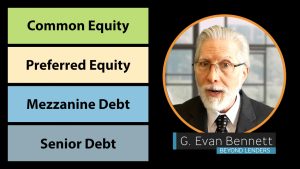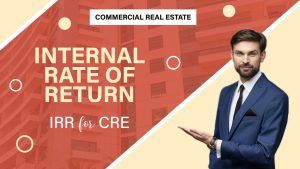If you’ve spent time around people in the commercial real estate industry, you’ve undoubtedly heard the term “cap rate.”
Objectives
- Define cap rate, with a little help from the Appraisal Institute.
- Learn how cap rates are used in direct capitalization.
- Consider the benefits and limitations of cap rates.

Listen to This Article
In commercial real estate, the capitalization rate, or “cap rate” for short, is a metric that’s commonly used to estimate the market value of income producing properties. The method in which it’s employed for that purpose is called direct capitalization. To be clear, there are other methods, and direct capitalization will not always be the most appropriate one to use, but a solid understanding of cap rates is going to be essential to your growth as a successful real estate investor.
What Is a Cap Rate?
Let’s start with the definition in The Dictionary of Real Estate, as published by the Appraisal Institute: A cap rate is any rate used to convert income into value. The good thing about this definition is how it doesn’t get hung up debating what cap rates represent. We’ll touch on that in a moment, after we’ve gone through a few examples. For the time being, let’s focus on the direct capitalization formula.
Using a Cap Rate for Direct Capitalization
A property’s NOI divided by an appropriate cap rate equals market value. Net operating income, or NOI, is the income produced by an investment property minus operating expenses. If you’d like to take a deeper dive into NOI, watch our video on the topic.
Back to direct capitalization, let’s go through a few quick examples. If we know that a property’s NOI is $90,000 and our research indicates that the appropriate cap rate is 6%, what’s the market value? Dividing $90,000 by 6%, which we’ll convert to a decimal, 0.06, results in a market value indication of $1,500,000.
As an illustration of how changing the cap rate impacts a property’s market value, let’s divide that same NOI, $90,000, by a higher cap rate, 7%. This results in a lower market value indication. It goes down to approximately $1,286,000.
Here’s one last example. Again, we’ll use the same NOI, $90,000. However, we’re going to use a lower cap rate this time, 5%. When we divide $90,000 by 5%, the market value indication goes up to $1,800,000.
From this, we can surmise that the movement in value is inverse to the movement of the cap rates. In other words, as the cap rate goes up, the market value goes down. As the cap rate goes down, the market value goes up.
Cap Rates Are Static, but So Easy to Use
Cap rates are often seen as an annual return, but it’s a hypothetical return at best because it doesn’t reflect debt service or any other below-the-line expenses. It’s also static. Essentially, it represents the unlevered yield generated by an investment property at one point in time. Any future profit realized through appreciation in value is not factored into the calculation.
The beauty of direct capitalization is its simplicity. As long as you have an accurate NOI and you’re savvy enough to know the appropriate cap rate, you can literally do the calculation on the back of a napkin. Just keep in mind how additional analysis may be prudent in some situations. For now, let’s keep it simple.
What Does the Cap Rate Tell Us?
Imagine you’re considering a garden-style apartment complex for purchase. You researched the market and found a number of recent sale comps with all the pertinent data. By dividing the NOI of each comp by its corresponding sale price, you realized that all the cap rates in this data set are around 5%.
Stepping back for a moment, what can we infer from this? It’s basically telling us that investors in this particular market generally expect to earn at least a 5% annual return on their capital for properties like the subject property. Once you know that, it’s simply a matter of dividing your subject property’s NOI by 5%, which will give you a pretty good indication of its market value.
How to Find Cap Rate Data
Real estate professionals use subscription services like CoStar, Crexi, and Real Capital Analytics to find sale comps. If you’re starting out as an investor and not in a position yet to justify the cost of these services, leverage your relationships with brokers, appraisers, and other investors to access market data. It’s also helpful to read the market reports and surveys published on a regular basis by industry associations and all the leading brokerages.
You should now have a good understanding of cap rates and how they’re used to determine the market values of investment properties. That puts you in a more advantageous position as an investor.



















